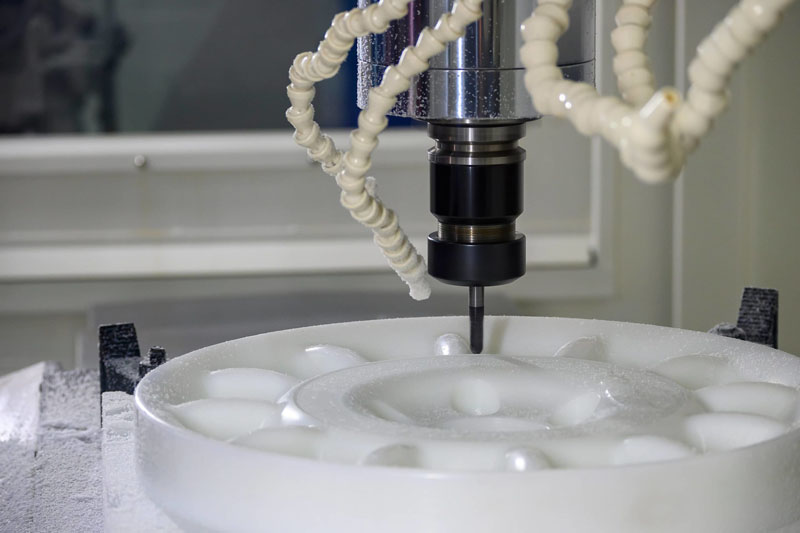Plastic machining has become an increasingly important part of modern manufacturing, especially as industries seek lighter, cost-effective, and corrosion-resistant alternatives to metal components. From aerospace and medical devices to electronics and automation systems, CNC machined plastic parts play a vital role in high-performance applications.
Designing and engineering plastic parts, however, requires a deep understanding of both material behavior and machining dynamics. Unlike metals, plastics respond differently to heat, stress, and cutting forces. This guide explores the key factors engineers and designers must consider to create durable, precise, and cost-efficient plastic machined components.
Understanding the Nature of Plastic Machining
Plastics differ fundamentally from metals in their thermal conductivity, mechanical strength, and dimensional stability. They are softer, more elastic, and sensitive to heat — which means tool selection, feed rate, and cooling strategy must be carefully optimized.
Key Characteristics of Machinable Plastics:
- Low thermal conductivity: Heat accumulates easily, which can cause warping or surface melting.
- Elastic deformation: Excessive clamping pressure or cutting forces may distort the part.
- Dimensional instability: Temperature and moisture absorption can alter tolerances over time.
Proper understanding of these characteristics ensures that the design phase anticipates and mitigates potential machining challenges.
Material Selection for Functional Applications
When designing plastic components, material choice is typically driven first and foremost by functional requirements. Each class of polymer offers distinct advantages in mechanical, thermal and chemical performance, and the selected grade directly governs both cost envelope and end-use behaviour. Certain formulations withstand the machining stresses and thermal loads imposed by CNC operations better than others; the following snapshot therefore focuses on the most frequently specified stock-shape candidates.
Nylon (PA)
The versatility and property profile of nylon make it the benchmark material for CNC-machined parts across industry sectors. Available routinely in rod and slab stock, it delivers high tensile strength, excellent impact resistance and a favourable strength-to-weight ratio. Light-weight nylon grades are widely adopted to replace metallic gears, bushings, spacers and bearing surfaces, yielding mass reduction and improved fuel economy. Components ranging from electrical connectors and insulators to pulleys and rollers benefit from nylon’s combination of mechanical robustness, impact strength, chemical and abrasion resistance, plus inherently low coefficient of friction. These tribological characteristics make the polymer particularly attractive for precision bearings and bushings.
Polycarbonate (PC)
Polycarbonate is specified wherever exceptional impact strength must be coupled with optical clarity. Its almost metal-like toughness and transparency render it the material of choice for machine guards, safety shields, lenses and sight windows in aerospace, automotive and general industrial equipment. Even under severe mechanical impact PC will not shatter, ensuring continued reliability in aggressive service environments.
Polytetrafluoroethylene (PTFE)
This high-performance thermoplastic exhibits excellent mechanical properties, minimal creep under load and high tensile strength. Outstanding chemical inertness and thermal stability (–200 °C to +260 °C continuous) make PTFE the prime candidate for seals, gaskets, diaphragms and other fluid-handling components exposed to aggressive media or extreme temperatures.
Polyoxymethylene (POM)
Also known as acetal – is a rigid, semi-crystalline thermoplastic that retains dimensional stability at elevated temperatures and is readily machinable to tight tolerances. Its inherently low coefficient of friction makes it the material of choice for precision bearings, bushings and gear assemblies.
Polyetheretherketone (PEEK)
PEEK is a high-performance engineering thermoplastic valued for its exceptional strength-to-weight ratio, continuous-use temperature capability (>250 °C), superior creep and fatigue resistance, enabling direct metal replacement. The polymer offers outstanding electrical insulation, broad chemical resistance and low wear. In addition, it is biocompatible and sterilisable, delivering reliable performance in medical, aerospace, industrial and electrical/electronic components.

Design Considerations for Plastic Machined Parts
The success of a machined plastic component starts with smart design. Below are the most critical factors that influence manufacturability, cost, and performance.
(1) Wall Thickness and Geometry
Plastics are more flexible than metals, so maintaining uniform wall thickness prevents uneven stress and deformation. Thin walls can vibrate or warp during machining, while thick sections may trap heat.
Tip: Keep wall thickness between 1.5 to 3 mm for most engineering plastics to balance rigidity and stability.
(2) Corner Radii and Fillets
Sharp internal corners can cause stress concentrations and cracking. Including fillets or radii improves strength and machinability.
Recommended internal corner radius: 1.0–1.5× the tool radius.
(3) Tolerances and Dimensional Accuracy
While CNC machining offers high precision, plastics expand and contract more than metals. Overly tight tolerances can lead to part rejection or deformation after cooling.
For most plastics, aim for:
General tolerance: ±0.1 mm
Critical features: ±0.05 mm
Tip: Avoid unnecessarily tight tolerances unless required by the part’s functional fit.
(4) Hole and Thread Design
Drilling and tapping plastic requires low cutting speeds and proper tool geometry to avoid cracking. For threaded holes, insert metal helicoils when frequent assembly/disassembly is expected.
(5) Fixturing and Clamping
Because plastics deform easily, excessive clamping pressure can distort parts. Soft jaws, vacuum fixtures, or conformal supports help distribute pressure evenly during machining.
Managing Heat and Stress During Machining
Heat management is a critical challenge when machining plastics. Unlike metals, plastics have poor thermal conductivity, so even moderate friction can cause surface melting or dimensional changes.
Best Practices:
- Use sharp tools to minimize friction and heat generation.
- Reduce spindle speed but maintain a higher feed rate to reduce contact time.
- Apply air or mist cooling instead of flood coolant (some plastics absorb liquids).
- Allow post-machining stress relief through annealing, especially for tight-tolerance components.
Annealing involves heating the plastic below its melting point and slowly cooling it to release internal stresses, improving long-term dimensional stability.
Prototyping and Testing
CNC machining is one of the best methods for rapid prototyping plastic components, as it avoids the need for costly molds. Prototypes can be tested for:
- Dimensional accuracy
- Thermal and mechanical behavior
- Assembly compatibility
Once validated, designs can transition to low-volume or full-scale production with minimal modification.
Conclusion
Designing and engineering plastic machined parts is both an art and a science. It demands a balance between material selection, structural design, and process control. By understanding the unique behaviors of plastics — such as thermal expansion, elasticity, and machinability — engineers can create components that deliver excellent precision, durability, and performance.
When executed with the right design principles and machining expertise, CNC plastic machining becomes a cost-effective, high-precision solution for both prototyping and production. It continues to empower industries seeking innovation through lightweight and high-performance engineered materials.



